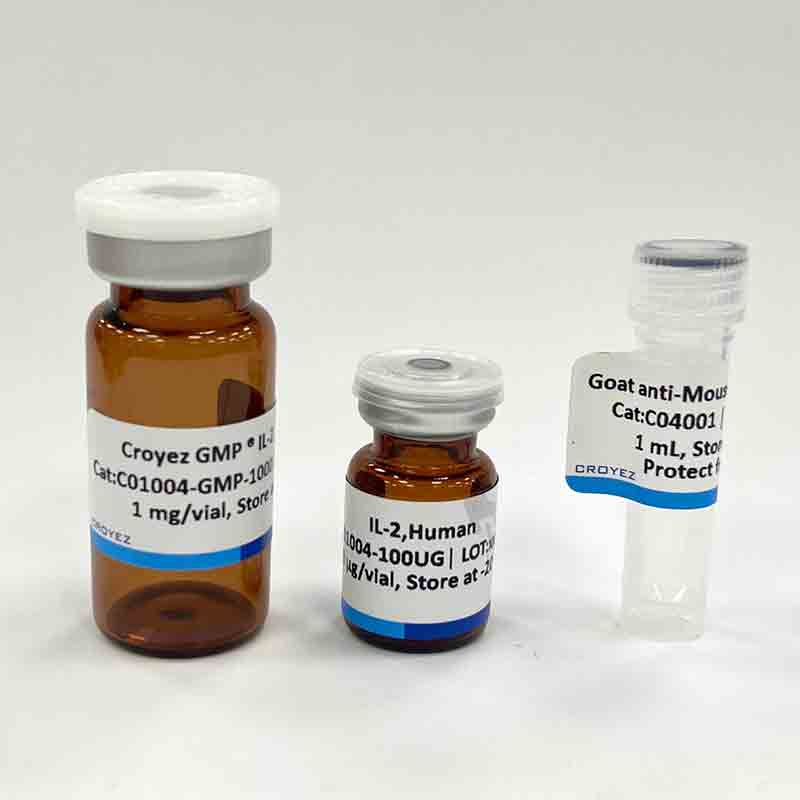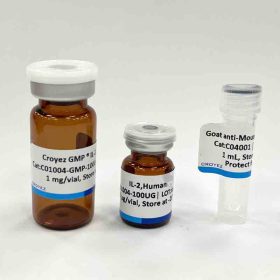Fibroblast Growth Factor 3 (FGF-3) belongs to the large FGF family which has at least 23 members (1, 2). All FGF family members are heparin-binding growth factors with a core 120 amino acid (aa) FGF domain that allows for a common tertiary structure. Studies have suggested that FGF-3 and FGF-8 function synergistically in otic placode induction and during neuronal development to regulate dorsoventral axis formation. During development, the activities of FGF-3 and FGF-8 are regulated negatively by the sprouty family proteins and by Sef (similar expression t)
Sequence:
MDAGGRGGVYEHLGGAPRRRKLYCATKYHLQLHPSGRVNGSLENSAYSILEITAVEVGIVAIRGLFSGRYLAMNKRGRLYASEHYSAECEFVER
IHELGYNTYASRLYRTVSSTPGARRQPSAERLWYVSVNGKGRPRRGFKTRRTQKSSLFLPRVLDHRDHEMVRQLQSGLPRPPGKGVQPRRRR with polyhistidine tag at the C-terminus
Source:
Escherichia coli
Endotoxin Test:
<0.1 EU per 1 μg of the protein by the LAL method.
Activity:
Measure by its ability to induce 3T3 cells proliferation. The ED50 for this effect is <78 ng/mL.
Purity:
>95% as determined by SDS-PAGE. Ni-NTA chromatography
Formulation:
The protein was lyophilized from a solution containing 1X PBS, pH 7.4.
Reconstitution:
It is recommended to reconstitute the lyophilized protein in sterile H2O to a concentration not less than 100 μg/mL and incubate the stock solution for at least 20 min to ensure sufficient re-dissolved.
Storage:
Lyophilized protein should be stored at -20°C. Upon reconstitution, protein aliquots should be stored at -20°C or -80°C.
Note:
Please use within two weeks after protein reconstitution.





